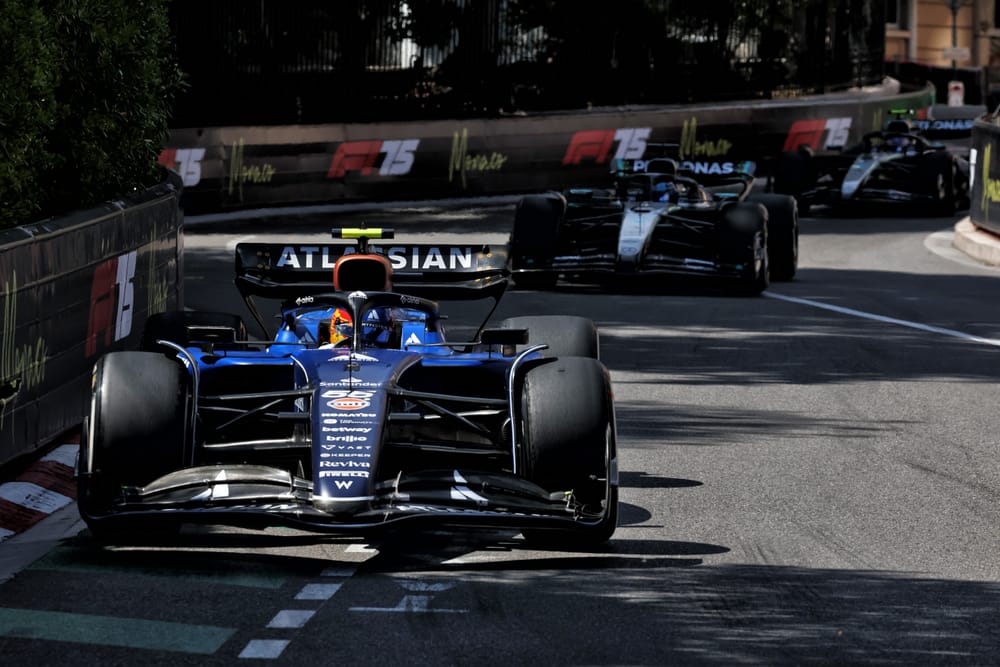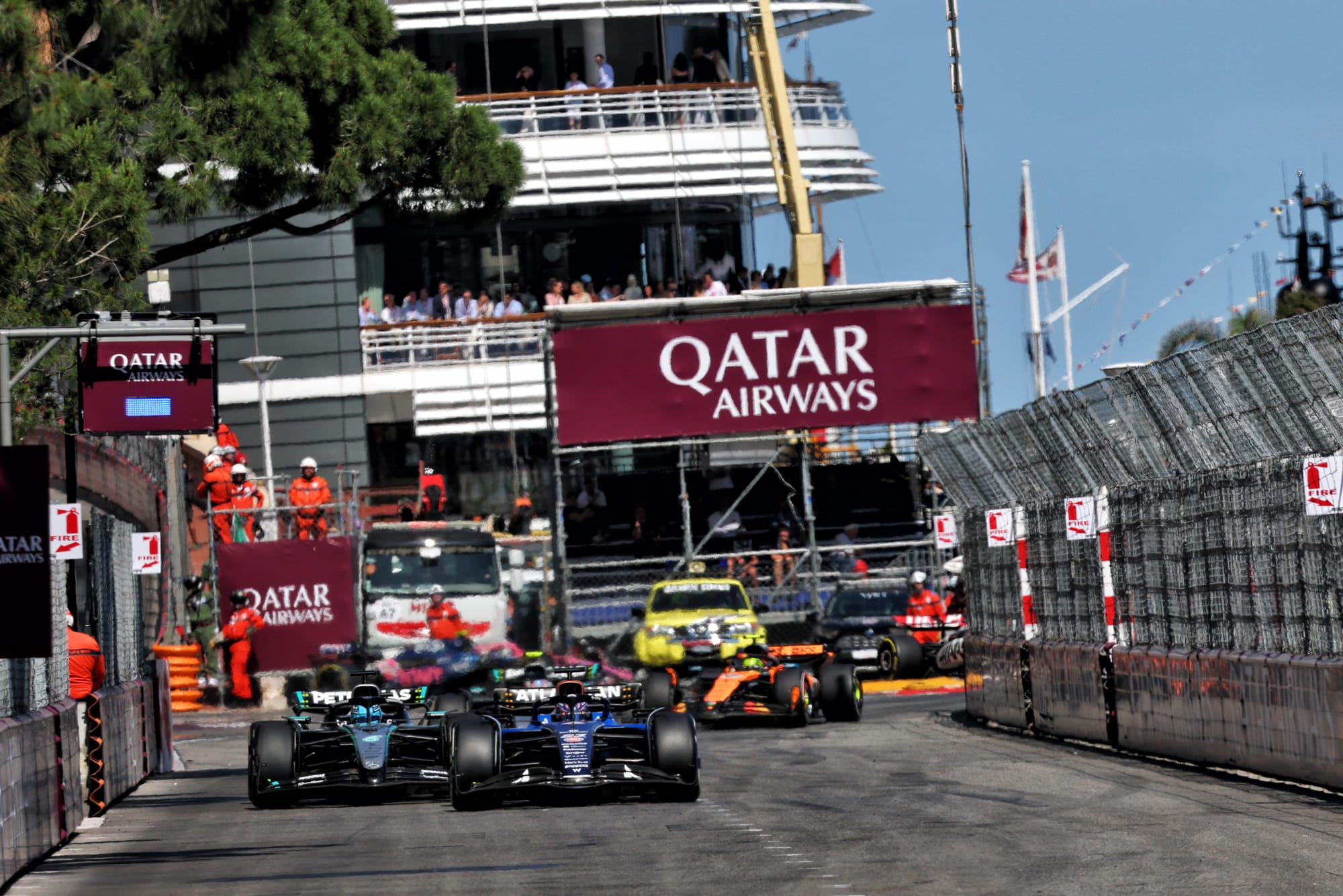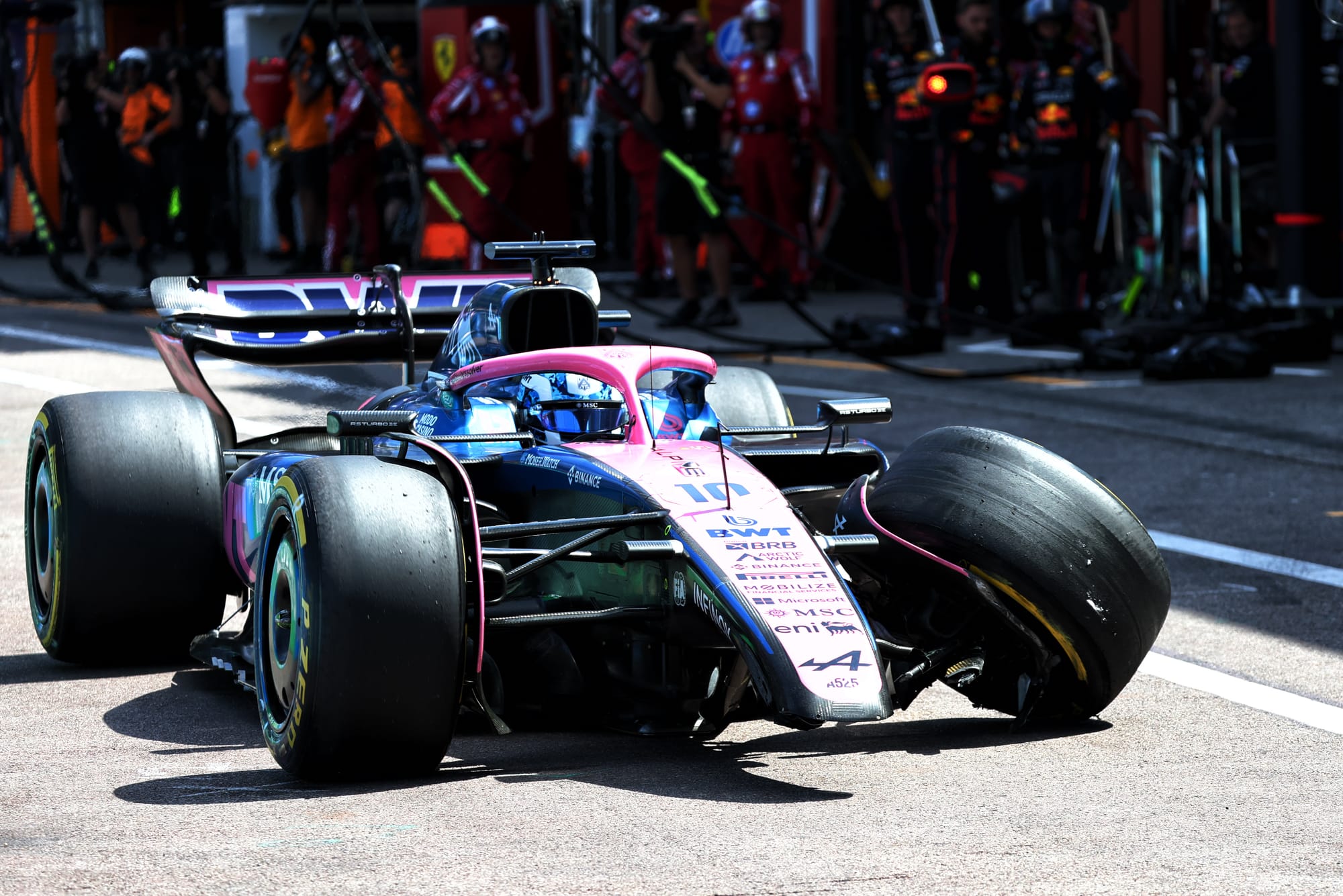Williams drivers Alex Albon and Carlos Sainz have expressed their regret that Formula 1’s mandatory two-stop strategy experiment at the Monaco Grand Prix descended into “manipulation”.
A new Monaco-specific rule demanding three sets of tyres be used left nobody sure which strategy would be most effective or how the race would be impacted by what others chose to do or if there were any major incidents.
It also opened the door for teams to deploy tactics to slow down other cars - which is exactly what happened as first Racing Bulls, then Williams, and finally Mercedes all clearly strategically used their two cars to run several seconds off the pace at times to build a big enough gap for the other to make a pitstop without losing position.
“The two-stop didn’t change much apart from maybe having two moments of tension in the race when maybe Monaco only used to have one moment of tension for the leaders,” said Sainz.
“Fair. I think this could stay. For me the bigger problem is the race manipulation and these kind of tactics.”
Racing Bulls did it first, early on, instructing its second driver Liam Lawson, running in ninth, to back up the midfield pack so the team could pit team-mate Isack Hadjar, who was fifth in the opening stint.
Lawson then did the same thing again after Hadjar rejoined to allow him make his second mandatory pitstop soon after, with Williams driver Albon first behind Lawson the entire time in a long train of cars.
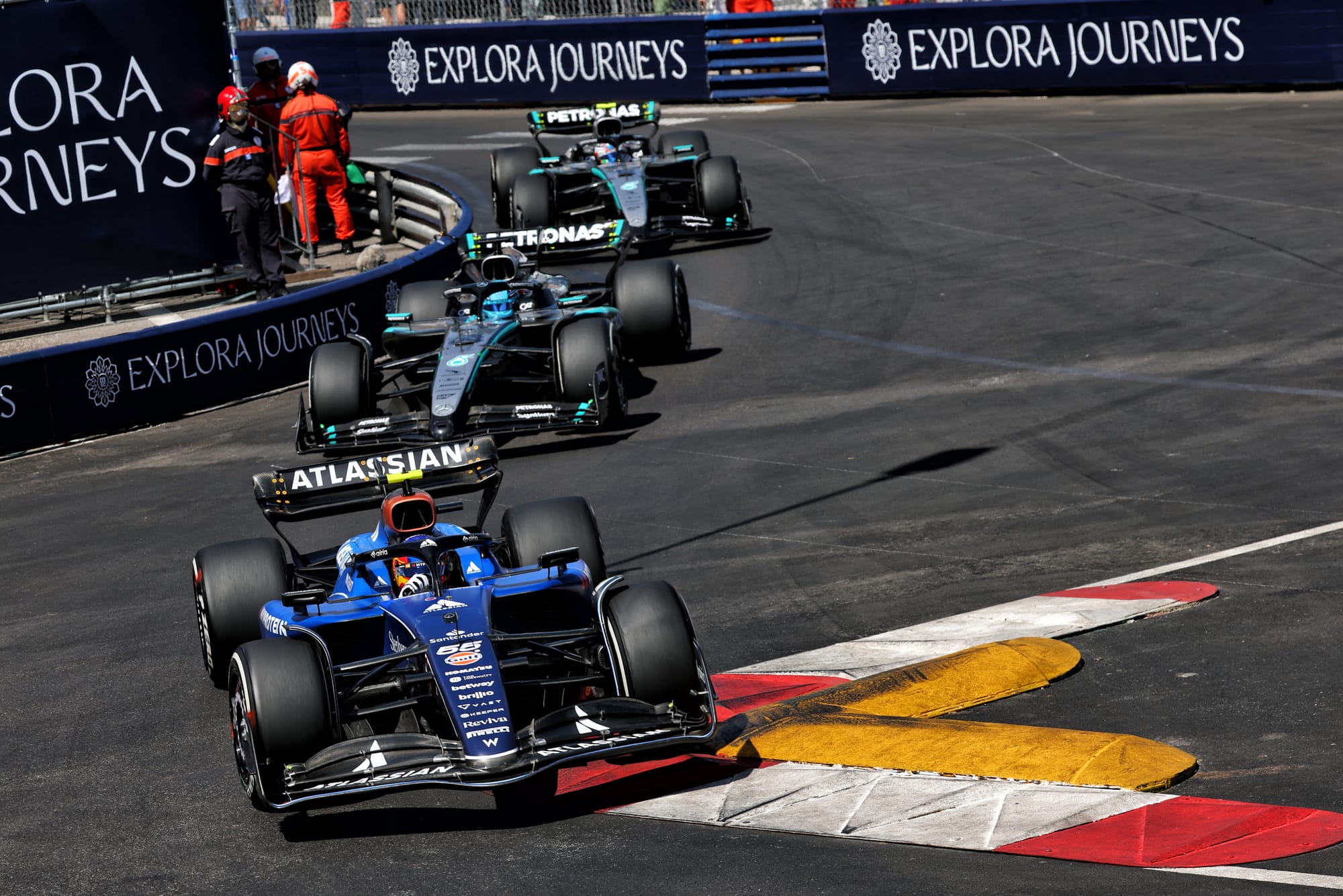
Williams then opted to do similarly with Albon and Sainz to serve their pitstops, as the field was so compressed by what Racing Bulls did that to run the rest of its own race normally would have dropped Williams out of the points, as some backmarkers had made their own pitstops early then caught back up easily.
It also swapped Albon and Sainz to allow Sainz to complete his own stops - reversing the positions later in the race when its ninth and 10th positions were safe.
“I know we put on a bad show for everyone, and I know we made a few angry drivers behind us in the process as well,” said Albon.
“It's just taking advantage of the track, the size of the cars, and that's it really.
“The two-stop just made us do it twice, rather than once. Just frustrating.
“Apologies to everyone who watched that, that wasn't very pretty.”
Albon said Williams knew this was a potential consequence of the two-stop strategy at the start of the event but “didn’t want to do and never planned to do it”.
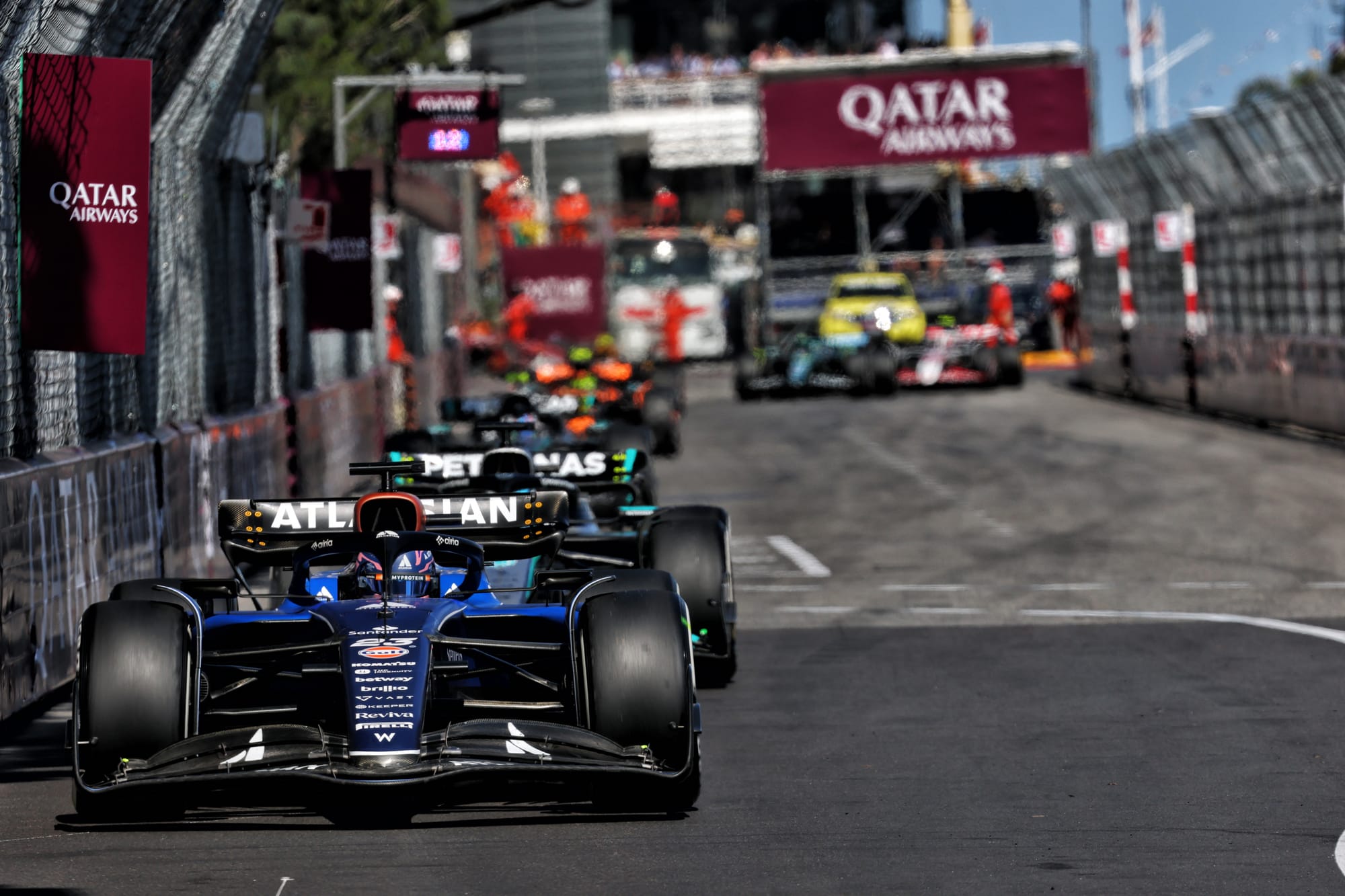
He said that if Racing Bulls “didn’t start it, we wouldn't have done it…but the way that they boxed everyone up, you then have to do the same thing for yourselves”.
“The only way to get out of that situation was to basically repeat what they did,” said Albon.
“Not pretty and frustrating, but in the end it's a team sport and we maximised three points for the team.”
Sainz said that Williams fell “victims first” so had to do the same thing “to make sure we got two cars into the points”.
He was a beneficiary of the tactic several years ago driving for McLaren so pointed out it was already possible in Monaco it was just exaggerated by the fact everybody had to stop twice so wanted to control that as much as possible.
And Sainz warned this could become a more common tactic if it went unaddressed.
“It’s something I definitely didn’t enjoy doing,” he said. “Something definitely the sport should look into.
“Ultimately you’re driving two or three seconds off the pace that the car can do. You are ultimately manipulating the race and manipulating the outcome a bit.
“We should find a way that this cannot be done in the future because I have the feeling every year people are going to do it more and more, and it’s [already] become more of a trend in the last years.”
He added: “I fear that as we move forward, teams are going to be more comfortable doing what we did and it’s going to become too much.
“The top 10 cars that are in the points are going to want to bank the points so the second driver is going to have to do this.
“But the lead driver can redo it for you, like Alex did for me.”
The methods Williams adopted led to an equally controversial moment when George Russell cut the chicane exiting the tunnel to move ahead of Albon and into the gap being created for Sainz.
This earned Russell a drivethrough penalty - harsher than the usual 10-second penalty that would be applied, and that Russell was willing to accept - but it still did not impact his race because he was able to pull out a big enough gap.
Plus, Mercedes then used Kimi Antonelli to help create enough of a margin for Russell to serve his own mandatory pitstops.
Albon half-jokingly described it as “a good move, that” and said he “can understand his frustration” - a sentiment Sainz echoed as he “nearly did it on Alex and Lawson in the first part of the race”.
Neither driver seemed to take too much issue with it but Albon said the penalty was right because “if that doesn't happen, then you're going to see chaos”.
“It was good that they put it harsh, because it would open huge loopholes in the future if we started to not punish it,” said Albon.
“George is cheeky. When you're in the car with him on the road, he does some cheeky moves. He did it on the racetrack as well today.
“I knew exactly what he was doing and...it was a bit too obvious, to get away with. But I applaud the effort. He had to do something to get points.
“And he did make us worry for a couple of laps before the drivethrough came.”


